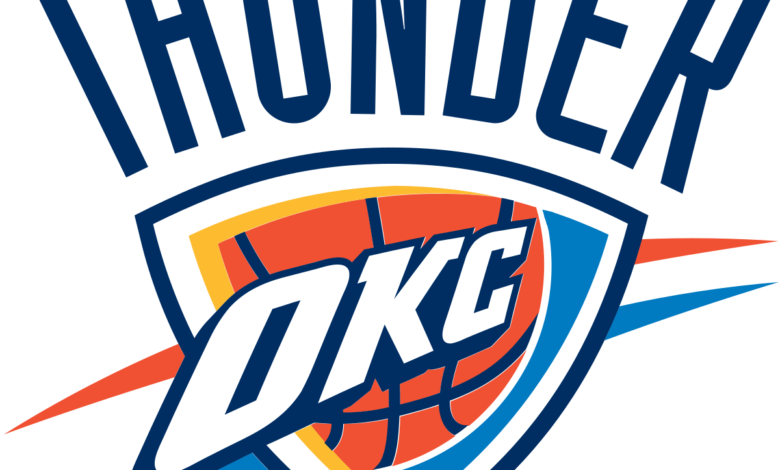Oklahoma City voters debate new sales tax to build NBA arena

OKLAHOMA CITY (AP) — When a group of Oklahoma City investors moved the NBA’s SuperSonics from Seattle in 2008 and renamed the franchise the Thunder, civic pride swelled at the arrival of the state’s first major league sports franchise.
Since then, the Oklahoma City Thunder have played their home games in what is now a modest arena by NBA standards. But the team owners want a new arena, and under a deal they cut with city leaders, they want taxpayers to foot most of the $900 million price tag.
Oklahoma City voters are set to decide Tuesday whether to approve a six-year, 1% sales tax to help fund construction or risk the same fate as Seattle: losing the team to another market. But some residents and experts who have studied public-private partnerships say the deal is much better for the wealthy team owners than the average resident.
Under the plan before voters, the new arena would cost at least $900 million, with Thunder owners chipping in 5%, or $50 million, and another $70 million coming from a previously approved sales tax earmarked for improvements to the current arena. The team also would agree to stay in the city for 25 years in the new arena, targeted for opening before the 2029-2030 season.
Many city residents say the deal is far too generous for the Thunder owners, who include some of the wealthiest residents of Oklahoma, especially at a time when most arenas are being funded primarily by private investment or a much smaller public investment.
“It’s such a huge amount on the citizens, which doesn’t seem like a very responsible use of our money,” said Natalie Lucero, a 29-year-old Oklahoma City resident who said she plans to vote no.
“Plus, it’s a regressive tax that affects the poorest people,” she said. “It just doesn’t feel good to me.”
The Thunder, purchased by a group of local businessmen for $325 million, are now valued at more than $3 billion, according to the most recent estimate by Forbes.
“These guys have made almost $2.7 billion, and they’re going to tell us they can’t afford a $1 billion arena?” said Nick Singer, a local realtor and organizer of the opposition group “Buy Your Own Arena.”
Singer and others also voiced concerns about the lack of price caps in the $900 million cost projection and said there’s no ironclad guarantee the owners will stay in Oklahoma City even if the arena is built.
A letter of intent between the city and the team’s owners specifies that the sales tax collections would limit how much is spent on the arena, according to Oklahoma City Mayor David Holt. The letter details that any surplus collections would be used to either complete the new arena or placed in a fund for future maintenance or improvements.
Holt said having a major league sports franchise brings many benefits that simply can’t be calculated on a spreadsheet, and transcend the projected economic impact. He said when he talks to investors and job creators in other places, Oklahoma City has clout that it didn’t have before it landed the franchise.
“The thing about having a major league professional sports team in American life is that it commands respect, that people realize that’s a city that must have enough people, enough corporate presence, enough general wherewithal to host one of the world’s greatest brands,” the mayor said.
Jon Echols, a Republican lawmaker who represents the city’s south side and said he plans to vote in favor of the proposal, said the team’s impact on the city’s overall renaissance can’t be understated.
When he was a young law clerk 20 years ago, Echols said city leaders at the time were hopeful any retail establishment might locate downtown. Besides a longtime jewelry store and a few lunchtime cafes, there was hardly any retail in the area and the city’s center was practically a ghost town at night and on weekends.
“We’ve moved from that to an absolute economic explosion,” Echols said. “It’s hit everywhere.”
Since the Thunder’s arrival, a massive new public park and convention center have been built near the arena, development along the riverfront has taken off and retail, restaurants and housing options downtown have exploded.
“It’s helped build a lot of city pride in everyone, and that’s the momentum we need to keep,” Echols added.
Still, economists who study arenas and their impact on cities say research consistently shows they have little tangible economic impact in the community and that public subsidies for arenas and stadiums far exceed any financial benefits they might have.
A group of more than 20 Oklahoma-based economists and finance professors published a letter on Dec. 4 encouraging a “no” vote on the new arena, which they said would not have a meaningful impact on economic growth and would instead divert public money from other needs while incurring new debt.
They also pointed out that for the 12 new arenas and 12 new stadiums built across the U.S. since 2010, the average public expenditure was about 42% and that since 2020, three arenas have been built with no public money.
“Alternatives that involved a larger ownership share or private financing would be superior options for the city,” the economists wrote.
J.C. Bradbury, an economics professor at Kennesaw State University in Georgia who has extensively studied public policy toward arena and stadium construction, is even more blunt in his assessment of the Oklahoma City proposal.
“Whoever negotiated this for the city of Oklahoma City should be fired for incompetence,” said Bradbury, who said he is particularly concerned about the lack of price ceilings.
“When you tell me an arena is going to be a minimum of $900 million with no caps, you’ve just committed to a $2 billion arena,” he said. “It is by far the worst stadium deal I’ve ever seen negotiated from a public standpoint.”



